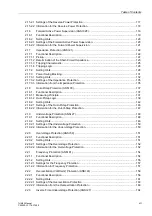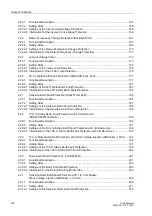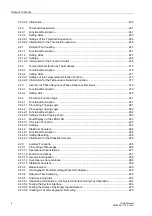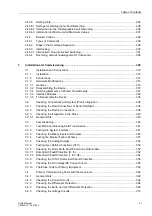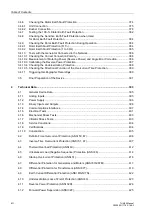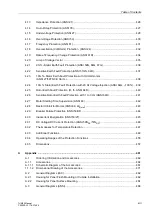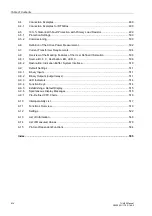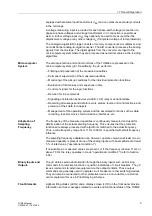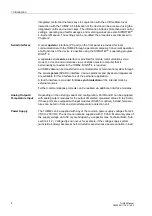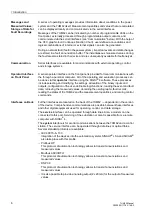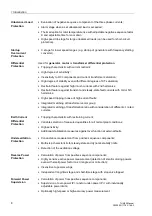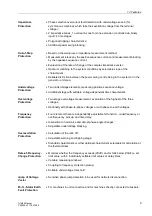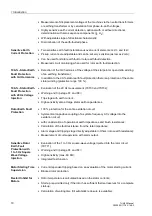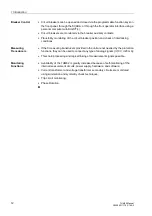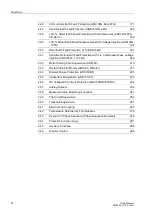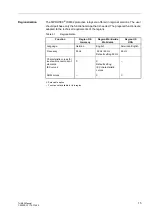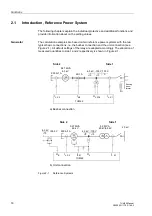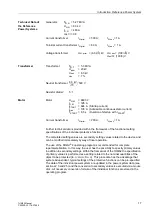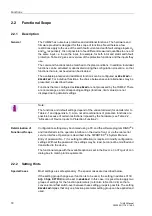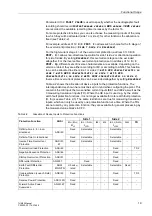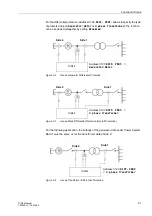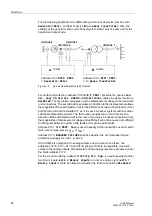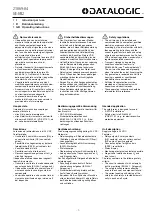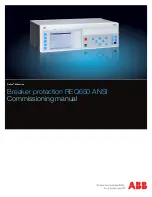
1.3 Features
7
7UM62 Manual
C53000-G1176-C149-3
1.3
Features
General Features
•
Powerful 32-bit microprocessor system.
•
Complete digital processing of measured values and control, from the sampling of
the analog input quantities to the initiation of outputs for, as an example, tripping
circuit breakers or other switch-gear devices.
•
Complete galvanic and reliable separation between the internal processing circuits
of the 7UM62 and the external measurement, control, and DC supply circuits
because of the design of the analog input transformers, binary inputs and outputs,
and the DC converters.
•
Simple device operation using the integrated operator panel or by means of a
connected personal computer running DIGSI
®
4.
•
Continuous calculation and display of measured quantities.
•
Constant monitoring of the measurement quantities, as well as continuous self-
diagnostics covering the hardware and software.
•
Storage of operational data, fault data, and oscillographic fault records with
information to be used for analysis and troubleshooting.
•
Communication with central control and data storage equipment via serial
interfaces through the choice of data cable, modem, or optical fibers, as an option.
•
Battery-buffered real time clock that can be synchronized with an IRIG-B (or
DCF77) signal, binary input signal, or system interface command.
•
Recording of circuit breaker statistics including the number of trip signals sent and
the accumulated, interrupted currents of each pole of the circuit breaker.
•
Tracking of operating hours (time when load is supplied) of the equipment being
protected.
•
Commissioning aids such as connection check, status information of binary inputs
and relay outputs, and start of a fault record.
Definite-Time-
Overcurrent
Protection
(I>) with
Undervoltage Seal-
In
•
Two instantaneous (Definite-Time) overcurrent elements for phase protection;
•
Undervoltage seal-in for synchronous machines, the excitation voltage of which is
derived from the machine terminals;
•
Optionally additional directional determination with the
I
>>–stage;
•
Blocking capability for reverse-interlocking bus-bar protection.
Inverse-Time-
Overcurrent
Protection
•
Common ANSI and IEC time overcurrent curves are available;
•
Optionally voltage controlled or voltage restraint alteration of pick-up value during
undervoltage;
•
Undervoltage influence can be blocked by fuse failure monitor or via binary input,
e.g. by a voltage transformer m.c.b.
Thermal Overload
Protection
•
Temperature rise of the protected equipment is calculated using a thermal
homogeneous model that takes into account energy entering the equipment and
energy losses. Thermal overload protection has full memory capability;
•
Adjustable warning levels based on temperature rise and current magnitude;
•
input of cooling medium or ambient temperature possible.

